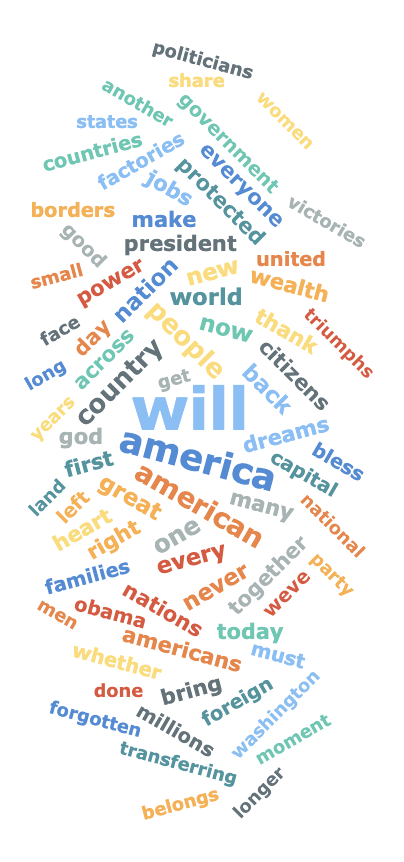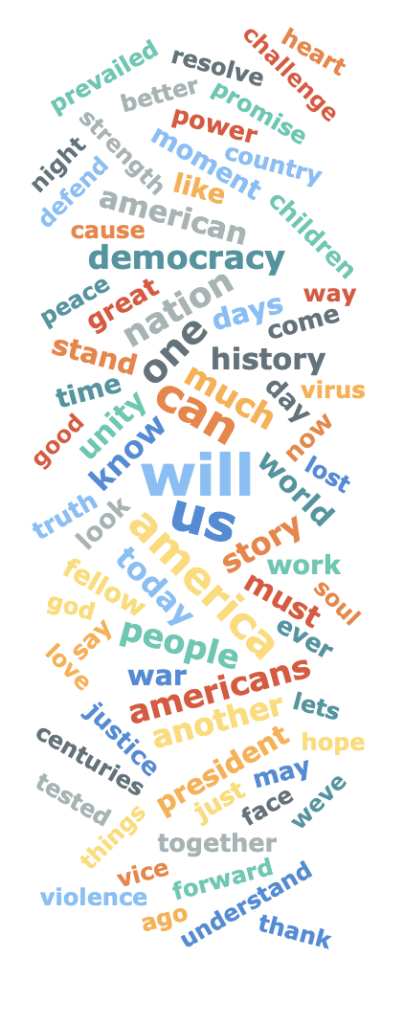Skill #1
Hi, I'm Megan, and I am a senior nearing the end of my time here at Roanoke. I am nearly done with my majors in History and Music, having spent the last four years completing research for both majors on various topics. On top of my regular coursework, I play the bassoon in the Wind Ensemble, sing in the choir, I am the current secretary of Historical Society, a member of the Fine Arts Committee, and I have been Dr. Rosenthal's research assistant for the Southwest Virginia LGBTQ+ History Project since Fall 2019. My historical interests lie in the histories of Imperial Russia and U.S. LGBTQ+ and women's history. Beyond the classroom, I enjoy painting, reading, and watching crime shows.
Skill #2
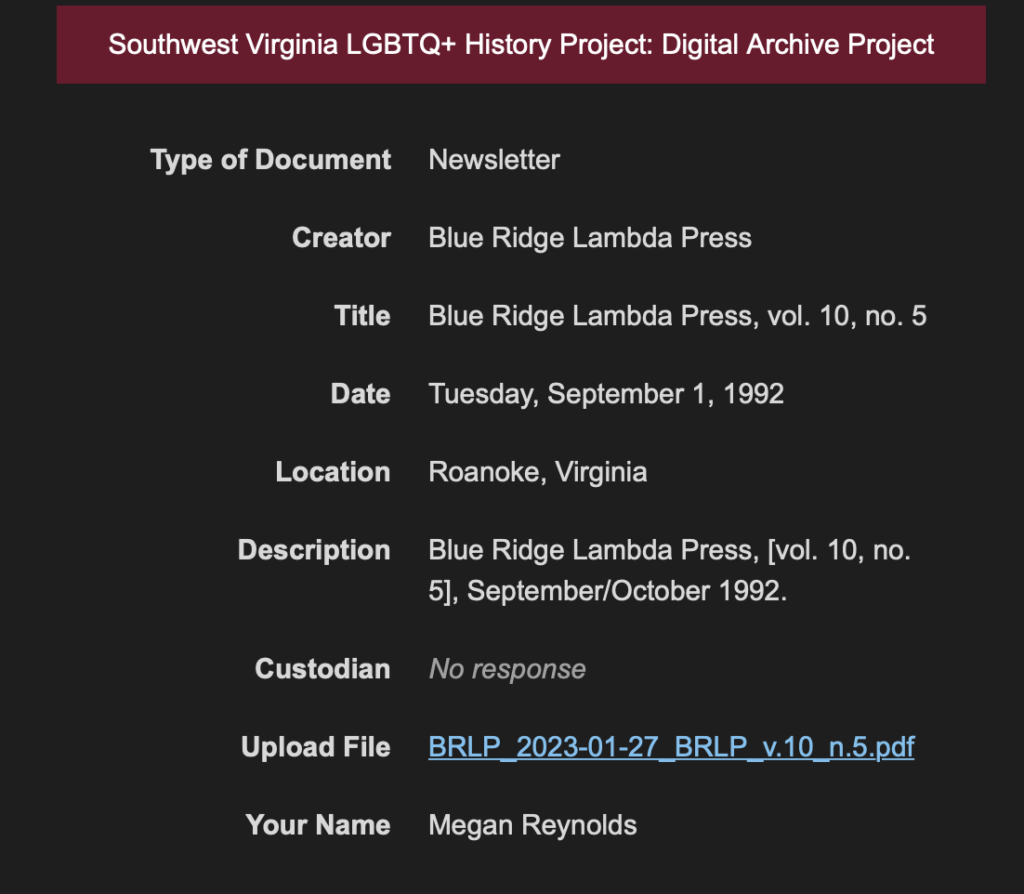
Skill #3
OCR Usage: Article on Victoria Woodhull in Evening Star
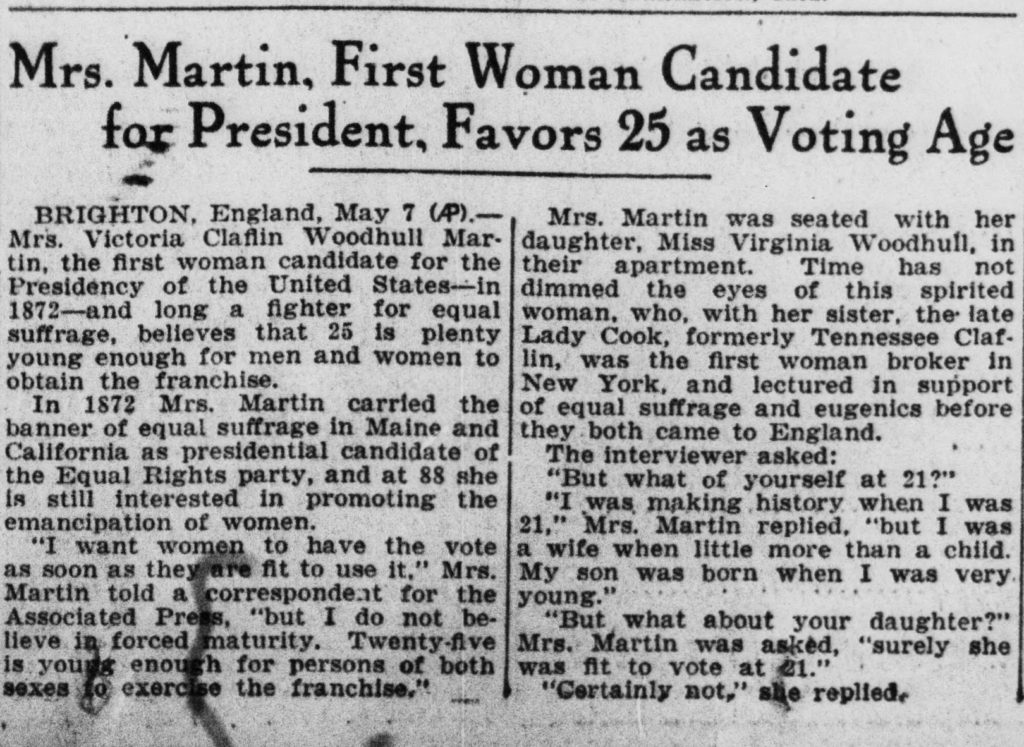
Virginia Woodhull, a prominent figure in the early suffrage movement during the late 19th century, became the first woman to announce her candidacy for president of the United States in 1872. Reported from England, but published in Washington, D.C., this brief interview with Woodhull discusses her thoughts on the minimum voting age. Despite her legacy of "making history" when she was 21, she does not believe that her daughter was fit to vote at 21. While this article from the nation's captial shines a positive light on Woodhull's activism, the fact that she believed that her own daughter was not fit to vote at the same age that she was part of the suffrage movement may prove to help expose the deep-rooted misogynistic world they were living in at the time.
Distant Reading: Word Clouds of Trump’s (2017) and Biden’s (2021) Inaugural Speeches
Word clouds produced via machine-reading of Donald Trump's presidential inaugural speech (January 20, 2017) and Joe Biden's presidential inaugural speech (January 20, 2021). The American Presidency Project.
As someone who is invested in equal rights and equity among all Americans, especially during a time of divide in our country, I wanted to look at the differences between Trump's and Biden's inaugural speeches. Now, while I may be biased already going in, the words that the word clouds produced do show varying differences between the two. One major difference that immediately stood out to me is that while Biden's speech talks more about the people of the United States as a whole and the unity that we must find, Trump's works to break people up into categories. Trump's speech includes words such as "women" and "men," "left" and "right," and even "borders." On the other hand, Biden said words like "unity," "love," "justice," "peace," and "democracy." These two speeches are a testament to what the former president's term was like and what the current president is still working towards.
Utilizing Google NGram to conduct feminist research
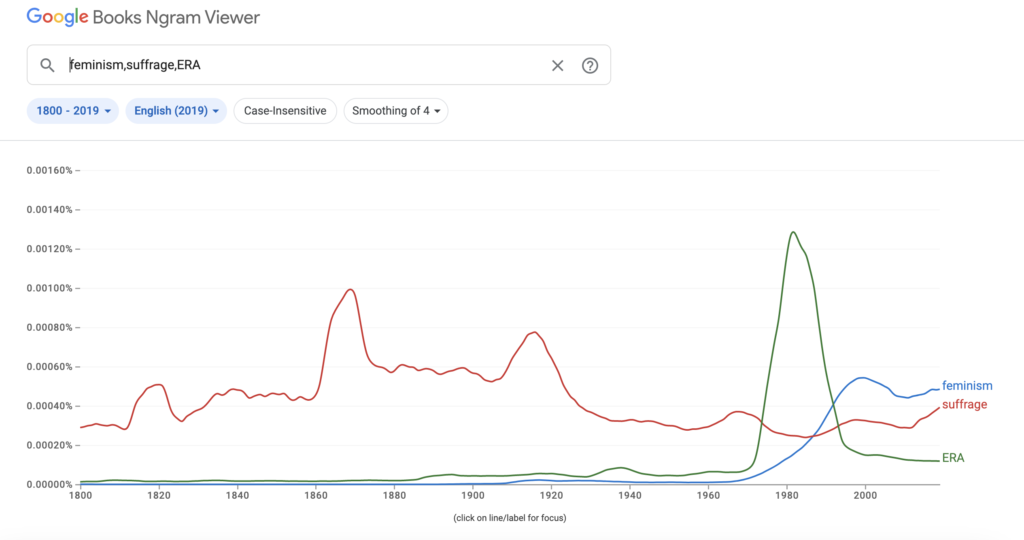
Having spent many years researching and analyzing feminist discourse, I chose these three terms to represent the feminist movement from an overarching vantage point. I originally had "equal rights" instead of "ERA," but it was basically a flat line and wasn't as interesting. For me, all of the spikes in the three lines make sense as they indicate the most prominent eras in feminist history. The "ERA" spikes in the late 1970s/early 80s as that is when women such as Gloria Steinem and Shirley Chisholm were advocating for the ratification of the Equal Rights Amendment to be the 27th amendment to the United States Constitution. The sharp decline afterward reflects the failure of the amendment to be ratified at a national level. "Feminism" gradually increases in use starting in the 1970s corresponding with the women's movement along with its "inner" movements such as the lesbian feminist movement. Lastly, "suffrage" peaks around 1815/1820, the 1860s/1870s, and the 1910s. That early time period is unknown to me other than possible written sources that mention the very early beginnings of the suffrage movement. The 1860s/70s peak indicates the work of women such as Lucretia Mott and Elizabeth Cady Stanton, despite the Seneca Falls Convention in 1848. And, of course, the 1910s influx was due to the work of women such as Alice Paul, the first wave of feminism, and the ratification of the 19th amendment, which granted white women the right to vote.
Skill #4

Boston, Massachusetts is my favorite city and I have indicated on my map some of my favorite places in the city. I could have chosen to do New York City as another option, pinning the Broadway theatres I have been to or something like that. However, I grew up going to Boston and have spent many days in the city. Plus, the three grad schools I have applied to are all within the Boston area and that part of my life is coming up a lot quicker than I realize. Of course, there is no direct correlation between my Boston map and the UK Global Fat Supply data. Despite there being no direct correlation, mapping all of these points out could be useful to some digital historian in the future (maybe). They could participate in a close reading of the map, allowing for an intimate interpretation of where the British received their fat supplies from in connection with my favorite spots in Boston, though unlikely. Or, they could do a more distant reading of the map and maybe determine why there were no fat suppliers in Boston by looking at the other points on the map. Who knows what this map could do for historians in the future.
Skill #5
Skill #6
Skill #7
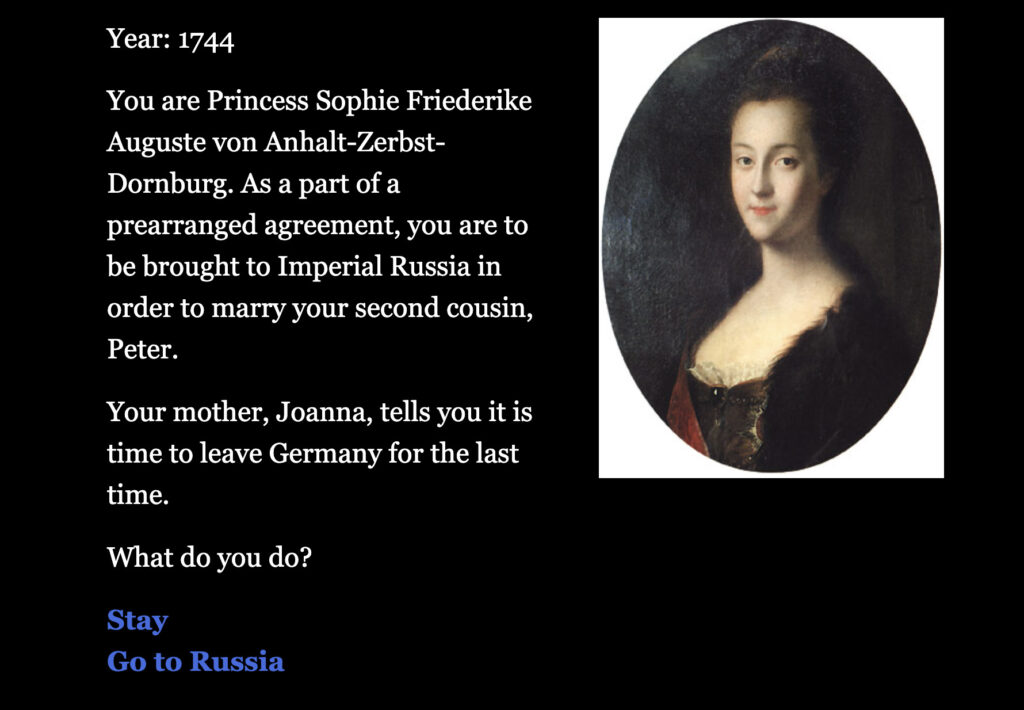
Check out my Twine, a text-based video game. To play, click on this link. The link will pull up an HTML file. Click “Download.” Now, open the website for Twine, click “Use in your Browser.” Click “Library,” then “Import,” and choose the HTML file you just downloaded. Click on the imported story. Now click, “Build,” then “Play.” Voila: it’s my game!
